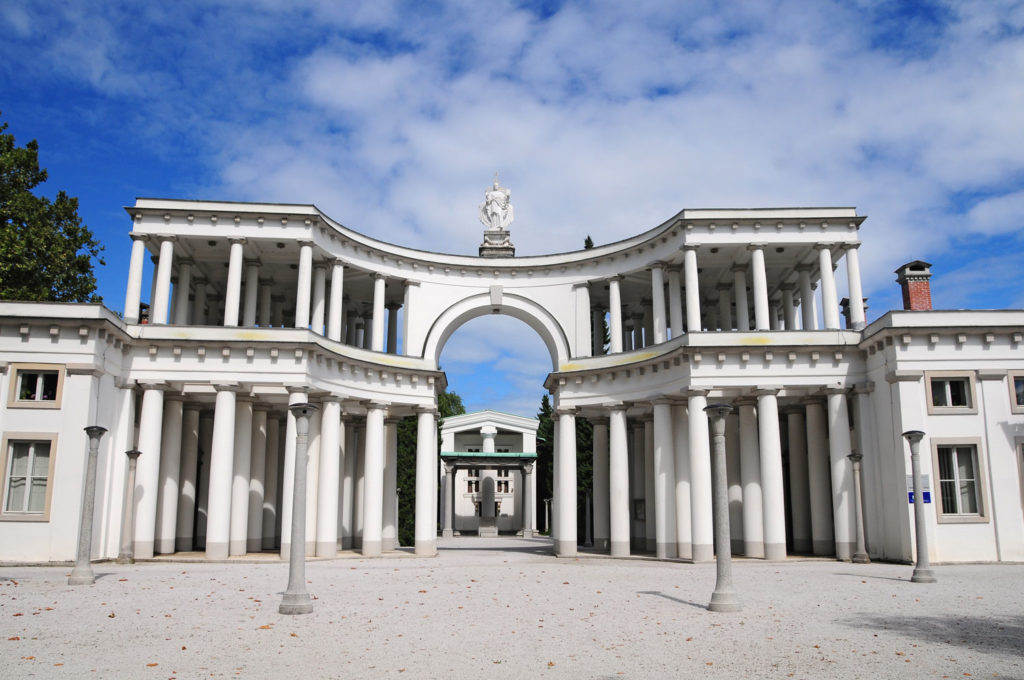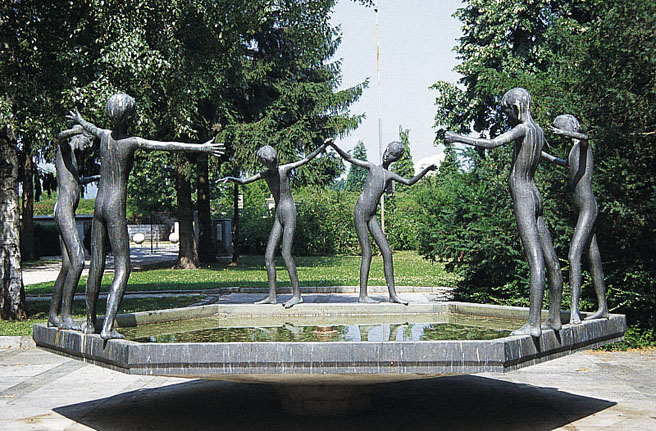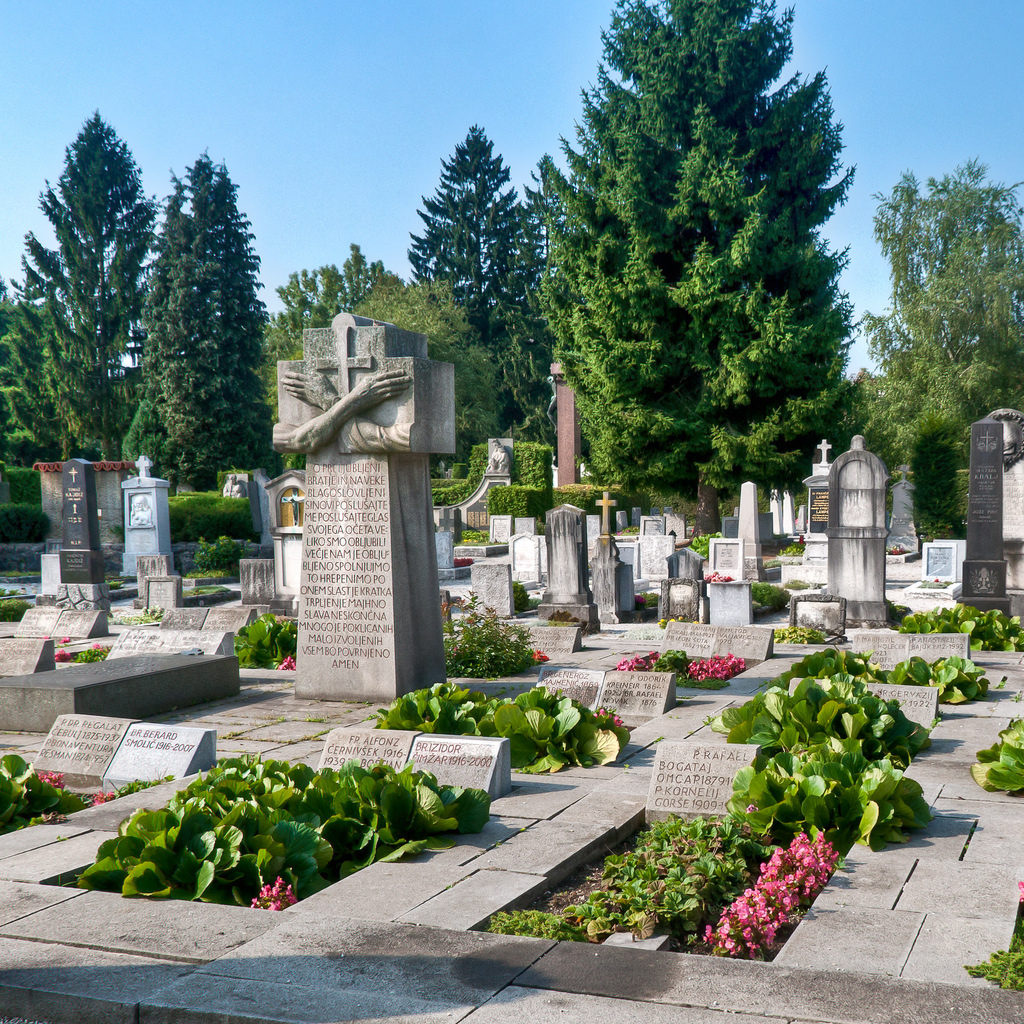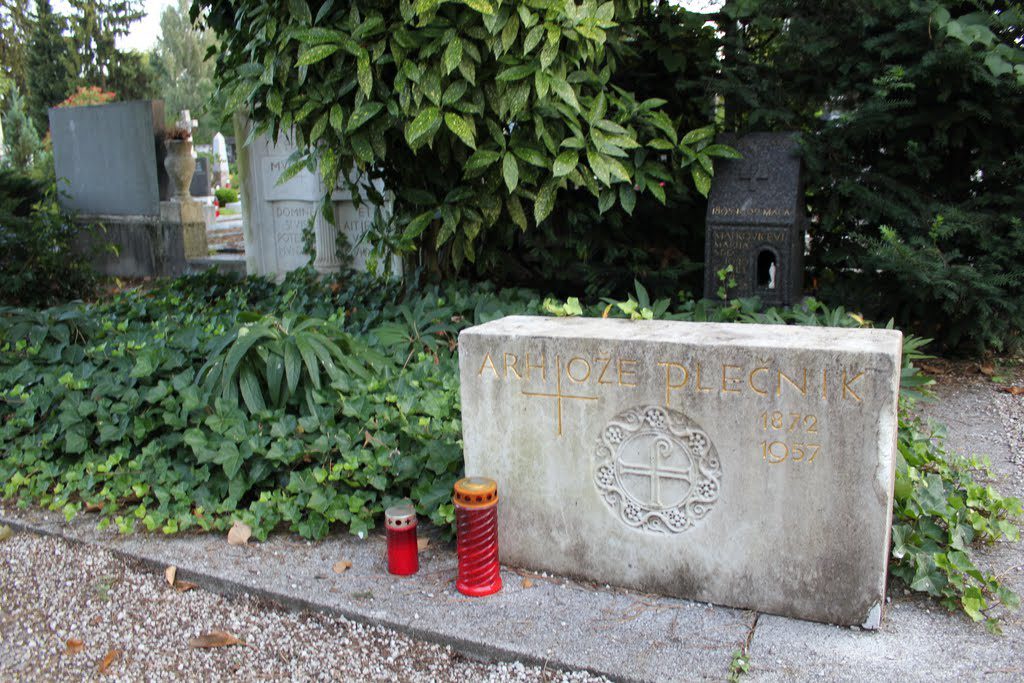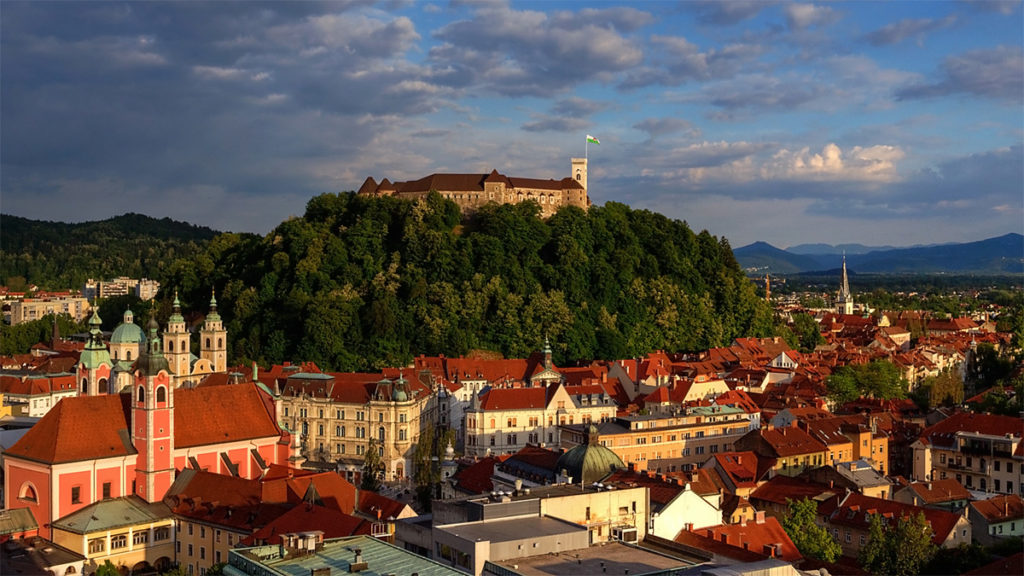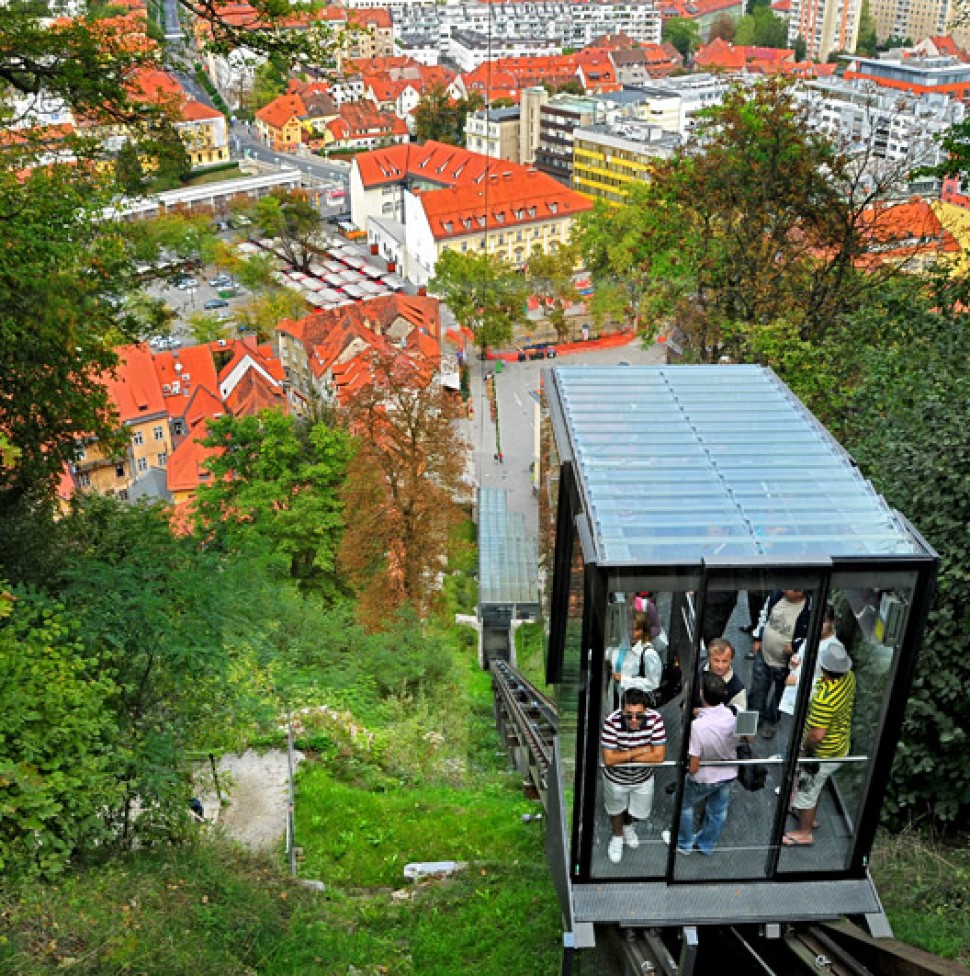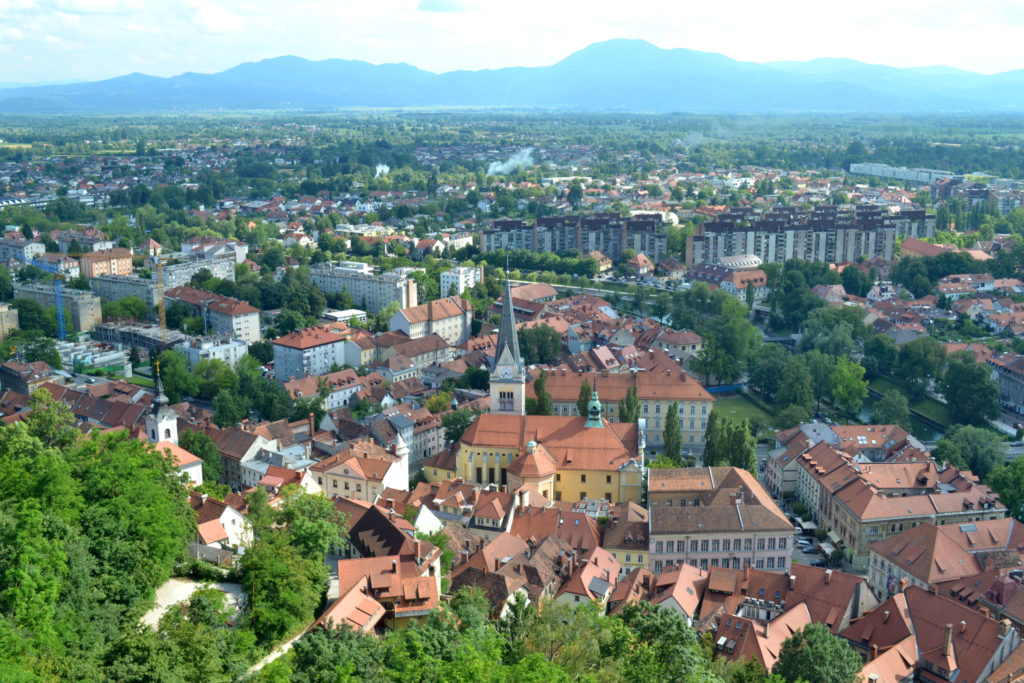Yes, this is an invitation but you need no reservation because I’m dying to take you away. Take you today. Enough of that. The reality of today’s entry is considerably less psychedelic than my reference. I’ll wrap up my visit to Ljubljana with our group’s magical musical tour, my solo-ish visit to the Ljubljana Castle, a wall of Roman ruins, a pair of artifacts that predate that wall by scores of thousands of years, our farewell dinner, and my visit to Ĺ˝ale Central Cemetery.
Let’s start at the very ending.
In this case, the ending I’m referring to isn’t simply the last item on my list but to the end of life – my visit to Ĺ˝ale. I’m starting with this part of the story because I’ve already mentioned my intention to visit Ĺ˝ale twice in this blog. Before leaving the U S, I’d listed Ĺ˝ale, together with Mirogoj Cemetery in Zagreb, as places I wanted to visit.
The walk from the Grand Union Hotel to Ĺ˝ale was a bit more than three kilometers, not including the small detour to the train station to find the Joyce commemorative. Traveling by foot, as my wanderings often do, took me through some areas of the city that aren’t usually frequented by tourists. I don’t think guides keep tourists from these places because they’re dangerous but rather because there’s not much to interest them.
I enjoy experiencing the more working-class parts of a city. It gives me a sense, albeit a superficial one, of how people actually live. As I moved away from the center of the city, I moved away from the elegant historic architecture. I certainly spotted more graffiti along the way, walked through a more prosaically commercial section, and even encountered a bit more litter. Rather than focusing on those details, I’ll instead tell you some of the history behind Ljubljana’s main cemetery.
In the early 1930s municipal authorities in the Slovenian capital decided to convert the Holy Cross Churchyard Cemetery into Ljubljana’s main cemetery. The Church’s cemetery had been used since 1906 and it would gradually replace Saint Christopher’s Cemetery – a section of which was known as Navje – that had been in use since 1779. Nearly all the Roman Catholic casualties in the First World War were buried in what would become Ĺ˝ale while Protestant, Jewish and Muslim soldiers were buried in Navje.
In 1931, a new section of the cemetery opened where many Italian soldiers were reinterred. A Jewish section, separated by a fence from the rest of the cemetery also opened in that year. By the middle of that decade, the local authorities proclaimed it Ljubljana’s central cemetery and began planning its expansion.
Dissatisfied with the original design proposed by the architect Ivo SpinÄŤiÄŤ, the city requested a new design from JoĹľe PleÄŤnik. Part of PleÄŤnik’s design was an unconventional funeral home that, unlike other funeral homes of the time, housed Ljubljana’s first chapels of rest.  (This is the best photo I could find.) It opened in 1940 and was called Ĺ˝ale (apparently, related to the old Slavic word for cemetery). Eventually it became the name of the entire complex. The new part was completed in 1942 and was named PleÄŤnik Ĺ˝ale Cemetery. Like the funeral home above, the monumental entry way, symbolically dividing the world of the dead from the world of the living, is characterized by columns typical of PleÄŤnik’s work.
(This is the best photo I could find.) It opened in 1940 and was called Ĺ˝ale (apparently, related to the old Slavic word for cemetery). Eventually it became the name of the entire complex. The new part was completed in 1942 and was named PleÄŤnik Ĺ˝ale Cemetery. Like the funeral home above, the monumental entry way, symbolically dividing the world of the dead from the world of the living, is characterized by columns typical of PleÄŤnik’s work.
Here are a handful of photos I lifted from various internet sites:.
The Fountain of Life,
and some grave markers.
One might expect France Prešeren would be buried in Ĺ˝ale but this isn’t the case. He’s buried in the town of Kranj about halfway between Ljubljana and his birthplace in Vrba near Lake Bled. On the other hand, PleÄŤnik, has a modest gravesite in the cemetery he designed.
By the time I’d walked to and through the cemetery, the idea of walking back was a bit less appealing so I hopped into a cab that pulled up near a bus stop. Normally, this wouldn’t be particularly interesting but a woman standing near me had called for the cab. Since I was travelling farther, she and the driver let me share the ride. After he dropped off the first passenger, he reset his meter charging me for only half the distance I rode. I added the two fares together and paid him an amount I thought was only fair.
Castle in the Clouds.
Okay, this reference may be beyond stretched but I’m trying to maintain a musical theme. Ljubljana Castle isn’t on or in the clouds but it sits high above the city, can get close to the clouds as this photo from the Visit Ljubljana site shows,
and its tower is a symbol of the capital.
Although archaeological evidence points to the site of the castle being continuously occupied since 1200 BCE, the oldest written evidence of a castle on the hill dates from 1161 and indicates that the first wooden and stone castle was built there about half a century earlier. The castle we visit today got its present shape in the 15th century. Most of the buildings date from the 16th and 17th centuries.
I made a bit of a sacrifice when I decided to walk up the winding streets to reach the castle. You see, the alternative route to Ljubljanski Grad, as it’s called in Slovenian, is a funicular ride.
And, as I’ve written elsewhere, I love those funicular rides. However, I decided that with all the beer and other spirits I’d been imbibing and the Slovenian ice cream I’d been so greedily ingesting, my body needed the walk. Plus, I always had the option of riding down (which I did).
Judging from this photo,
 Â Pat also decided the walk might do her some good, too.
 Pat also decided the walk might do her some good, too.
Remember that Slovenia was, for most of its history, part of the Austro-Hungarian Empire and wasn’t viewed with great importance by the ruling families. As a result, the castle has rarely been the residence of even an important member of the nobility much less a ruler. For most of the 16th and 17th centuries, its main purpose was serving as a defense against the Ottoman Empire as well as against peasant revolts.
By the end of the 17th century and for most of the 18th, the castle became an arsenal. With Napoleon’s invasion and conquest, its use converted to serving as a barracks and a military hospital. Then, when the Austrians regained control of Ljubljana, they used the castle as a prison until 1895 when it was damaged in the Easter Earthquake. You can visit the penitentiary 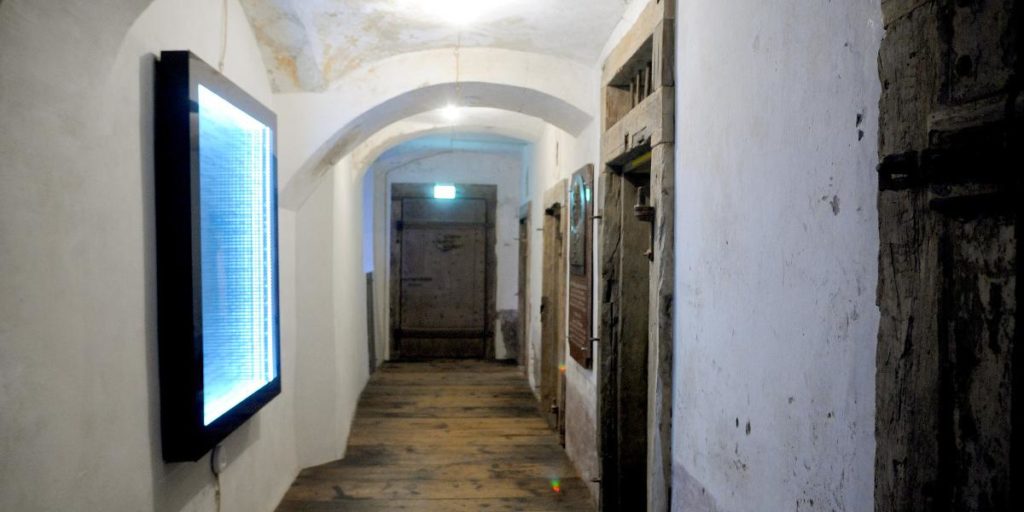  and enter the cells. (There’s a visual surprise that awaits in the last cell.)
 and enter the cells. (There’s a visual surprise that awaits in the last cell.)
The municipality of Ljubljana bought the castle in 1905. Mayor Ivan Hribar, who had overseen the city’s rebuilding after the earthquake, planned to establish a city museum there. However, funds weren’t available and it instead became a residence for Ljubljana’s poor. During World War II, the castle again took on the function of a prison but also retained its use as housing for the disadvantaged so the two groups lived side by side.
But visiting the castle isn’t only about its dark history. You can visit the Chapel of Saint George (lending some credence to the notion that the city’s ties to Saint George are one explanation for the importance of the dragon seen on its flag). The Chapel has a stunning Baroque ceiling  framed by Gothic windows. And, of course, you’re treated to some wonderful views of the charming capital city where you get visual confirmation that Ljubljana isn’t just environmentally but is, quite literally, one of Europe’s greenest cities.
framed by Gothic windows. And, of course, you’re treated to some wonderful views of the charming capital city where you get visual confirmation that Ljubljana isn’t just environmentally but is, quite literally, one of Europe’s greenest cities.
In the middle of the 20th century, the city finally began to realize Hribar’s vision and began a project to renovate and revitalize the castle. On the castle’s tourism website, you can see before and after photos.
In addition to the penitentiary, the chapel, and the tower views, one wing of the castle now holds an Exhibition of Slovenian History divided into six historical periods: (1) prehistory and the Roman period; (2) the Middle and Early Modern Ages; (3) the 19th century and First World War; (4) the Kingdom of Yugoslavia and Second World War; (5) Socialist Yugoslavia; (6) independent Slovenia. Among the first items displayed in the prehistory section is the replica wheel you see here:
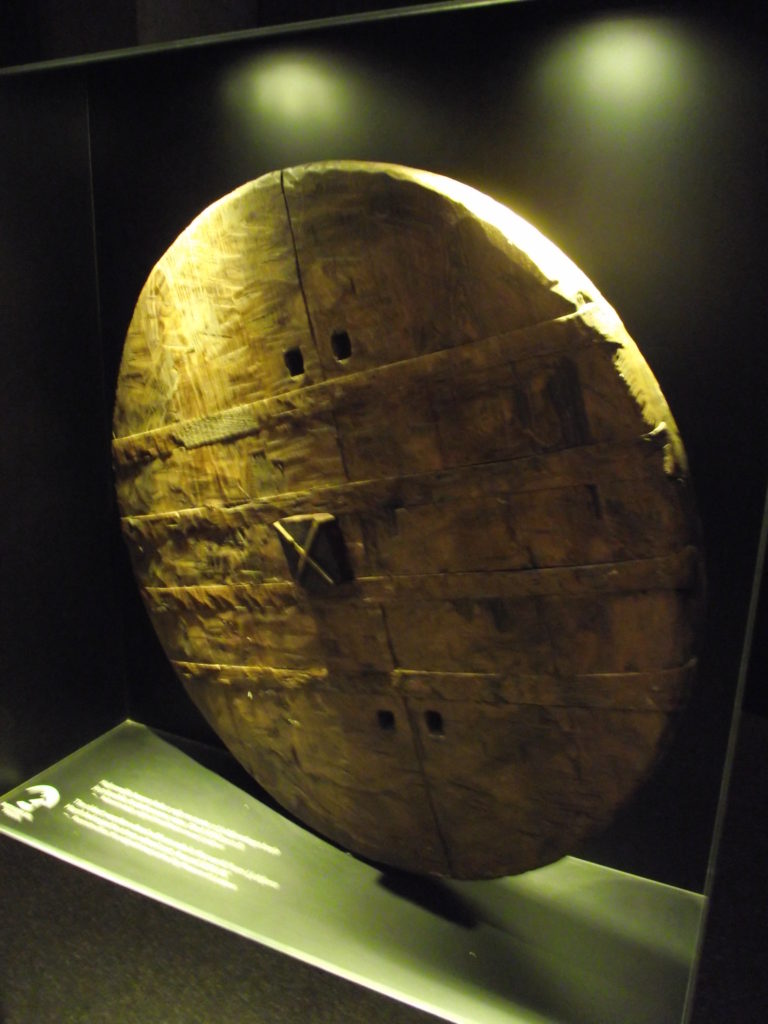 which is called the Ljubljana Marshes Wheel.
which is called the Ljubljana Marshes Wheel.
Located about 12 kilometers south of the city, the Ljubljana Marshes are a UNESCO World Heritage site protected to preserve the prehistoric pile dwellings first discovered there in 1875. In the intervening years, archaeologists have discovered over 1,000 piles. The wheel is significant not only for its 72-centimeter radius but because its age is approximately 5,150 years making it the world’s oldest known wooden wheel.
Oh, and the city does rent out parts of the castle for weddings and other events. So, if you’re interested…
